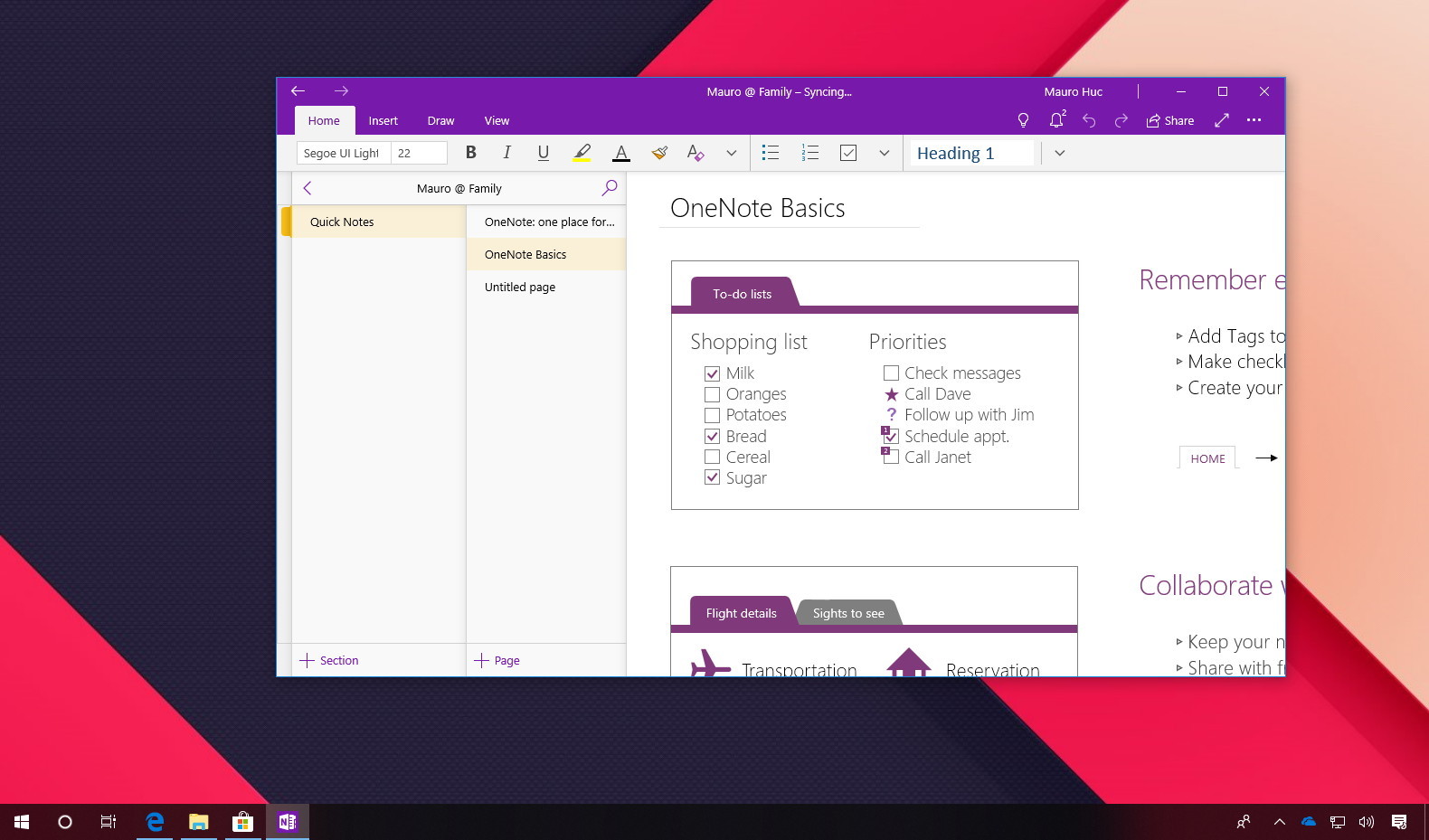

All of that should make the transition to OneNote UWP a bit less painful, even for people who have been using the desktop application for well over a decade. Windows 10 already ships with the app pre-installed and it’s the version that is most similar to OneNote for iOS, OneNote for Android, and OneNote’s web version. In many ways, OneNote UWP is already a better app, with superior ink effects, better ink-to-text capabilities, and improved battery life and performance as some examples. Notably, two OneNote 2016 features, tags and tag search, will be making their way to OneNote UWP “soon.” Perhaps most important, OneNote 2016 also allows saving notes locally, while OneNote UWP can only save notes in the OneDrive cloud. Please let me know if you need any further assistance.

OneNote UWP will also be receiving faster and more reliable syncing across all platforms and the ability to see live previews of embedded Office files.Īt the same time, a few features are OneNote 2016-only, such as the ability to create Outlook Tasks in notes, pin commands to the toolbar, record video, and utilize third-party add-ins. OneNote is definitely still available on Windows 11, you shouldnt have any issue regarding this when upgrading.

Microsoft warns select Windows 11 beta testers to move back to Windows 10 nowĪhead of the rumored Windows 11 launch, Microsoft hints at the end of Windows 10Īlready, some features are only available in the OneNote UWP app, such as being able to share notes easily using the Windows 10 sharing functionality, view notes sorted by update order, see Notification Center updates, use the Researcher to find quotes and citable sources, and enjoy the Immersive Reading view. Microsoft seems to be pushing developers away from UWP Windows apps


 0 kommentar(er)
0 kommentar(er)
